While it might be less stressful to keep your ‘best books’ up on a high shelf, putting them within reach and teaching kids how to care for books will have a much greater impact on their experience in your program.
In an earlier post, I openly admitted that at one time or another I was not very good at sharing my supplies with the kids in my care.
I think the practice of ‘saving supplies and materials for a special occasion’ is more common than one would think.
In my experience, kids tend to rise up to the expectations set forth as long as you prepare them and give them the tools to be successful.
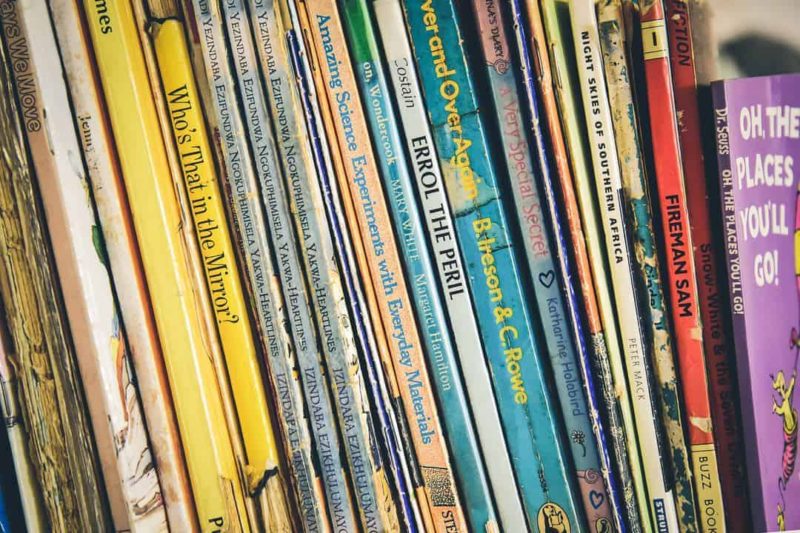
Create a space that is cozy & inviting.
Your reading space should include comfy furniture or pillows for kids to sit on. Some ideas are:
- Bean bags
- Kid-sized furniture
- Pillows (I love hitting up IKEA for these…the covers come in many colors and designs to match your decor and even better…the covers are removable so you can wash them).
- Hang bright photos of kids reading.
- Add soft lights to illuminate the space.
- Hang a canopy overhead.
- Invest in a sturdy bookshelf that will allow the covers of the books to be displayed. I love this one from Lakeshore Learning.
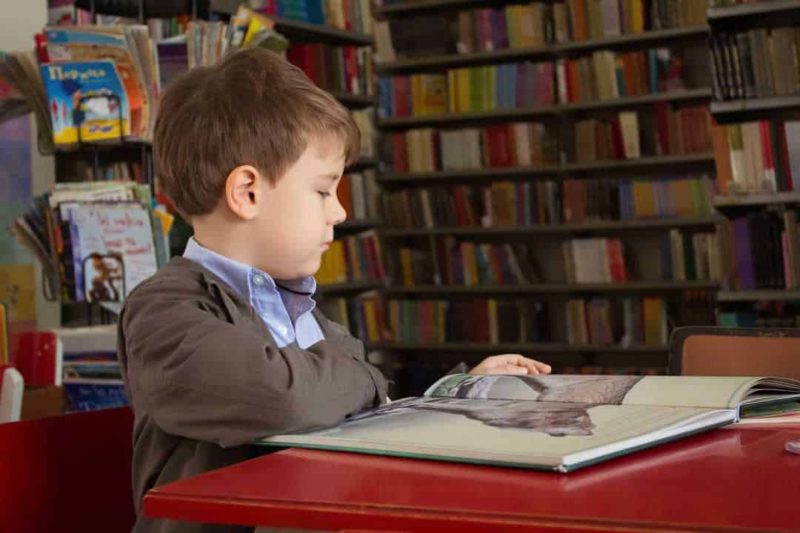
Rotate Your Books Frequently
Rotate your books on your shelf weekly or monthly. If you find that your personal library isn’t big enough, take a trip to your local library and fill your shelves!
Rotating your books keeps the space fresh and exciting.
Take notice of the books that are true favorites and don’t be afraid to leave those out more often.
Be Patient & Know Your Group
Mixed Ages: If your group is comprised of infants, toddlers, AND preschoolers, be sure to offer a good mix of board books (on the lower shelves) and picture books (on the upper shelves).
Toddlers: If you find a toddler chewing on a picture book, you can redirect her by offering her a board book instead or remove the book from her mouth and demonstrate how to use the (soggy) book.
Infants: Offer these great no-rip books like these to your babies! It’s never to early to introduce reading!
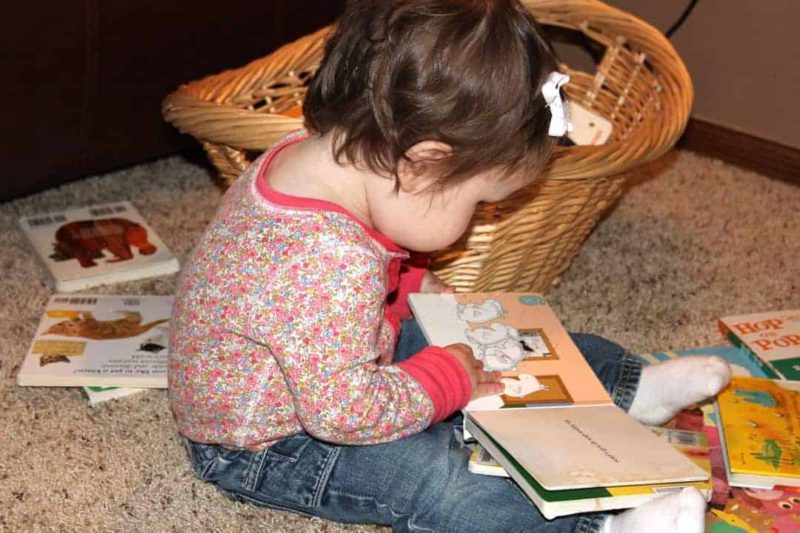
Teach Kids About the Parts of a Book
Part of teaching kids how to care for books means helping them get to know books on a deeper level.
Teach kids vocabulary that is associated with a book (spine, pages, title page, etc).
Tip: Be animated throughout this discussion! You don’t want to be facilitating a college lecture here…
You’ll be amazed by how quickly these little guys and gals pick up on this new terminology and share it with their parents at home during story time.
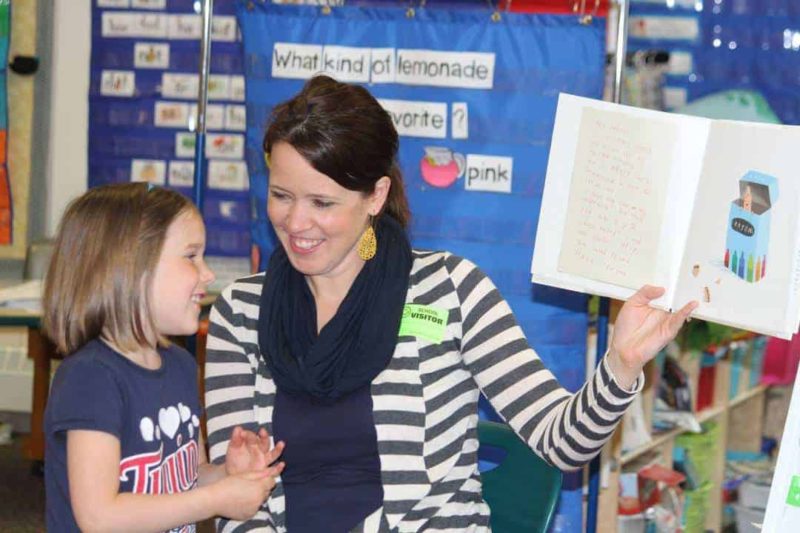
- Front Cover/Back Cover– let the kids make observations about what is on the cover. Note the title, the colors, and the author’s name, etc.
- Dust Jacket – We talk about how some books wear a jacket! Isn’t that silly?? (I say to the kids), just like we wear jackets to keep us protected.
- The Spine – (always a fav!) We point out the spine and take some time to feel our own spine. We talk about how a spine holds the pages of the book together, just as our spine helps hold our body together.
- Title Page – We always point out the title and the author and/or illustrator’s name on the title page.
- Author/Illustrator – What do these big words mean? What does each job entail? Would you rather be an author or illustrator? Or both?
- The Pages – We talk about safe ways to turn the pages of a book and what to do if a page rips. (We had a small crate in the room labeled “Book Hospital” for books that needed some TLC)
FREEBIE PRINTABLE !
Send home this sheet with each child so a parent can reference the terms their child learned about as they are reading bedtime stories. (Click on the image & print)
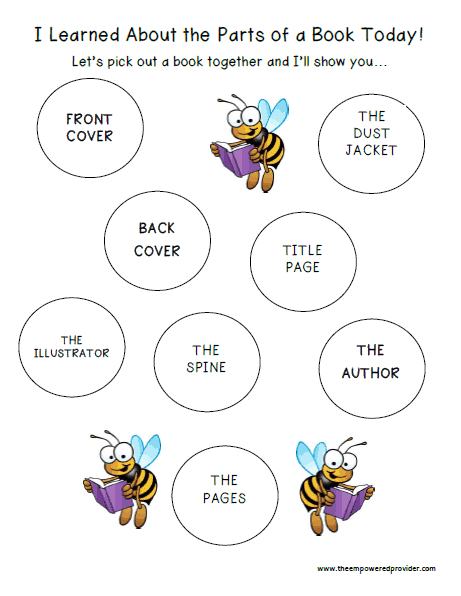
Teach Kids About Book Etiquette
When kids know better, they do better. Some kids will take to this lesson quickly and will treat books like golden treasures, while others will take some coaching and develop these skills over time. Here are a few topics to cover:
- Scribbling In a Book – If you can, find a book that has scribbles on the inside cover.
I pretend to get really weepy here–acting out as a crazy book-lovin’ woman who adores books so much and how sad it makes me when I see crayon scribbles on a page.
I do a little dramatic scene that may go something like this: “Oh kids…isn’t this so sad? Look! Someone forgot that the best place to color is on paper or in a coloring book… instead they colored inside the book. Oh dear… I wonder if they were a little guy or gal who was still learning about how to care for books. Where would you color instead?”
Finish your discussion by talking about where kids CAN color!
2. Wear and Tear – We talk about how all things wear out when we use them a lot. Sometimes I show them an old pair of tennis shoes or a frying pan that has gotten a lot of use. I assure them that it’s okay to read one book over and over again. Sometimes when a book looks old, it means it is very very loved. We talk about ways we might be able to save a book and make it strong again.
Insider Tip: Set out a box that can act as a ‘hospital’ for books when they get ‘sick’. Add a red cross symbol on the front for extra fun.
3. Where Do Books Go? – Next we discuss what to do when we are done reading a book. Where does it go? Where is the safest place for our books? What should we do if we see a book lying on the floor?
4. Show Them Your Library Card – I whip this piece of plastic out like it’s a badge of honor. I tell them I had to make a promise to the librarian that I would take very good care of the books I borrow. Then I show them where I signed my name to keep my promise. We talk about who has a library card and/or who may be interested in getting one someday.
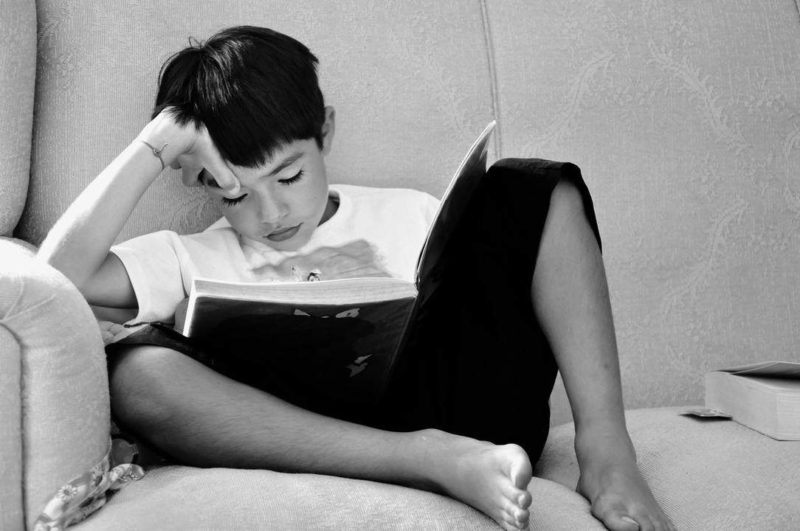
Reading is vital to a child’s development. For the love of Pete, let them hold the ‘special’ books.
One thing to remember: If something happens to the book, you can always replace it by purchasing another one.
What you can’t replace is the time your child spends in your program.
Make it count.
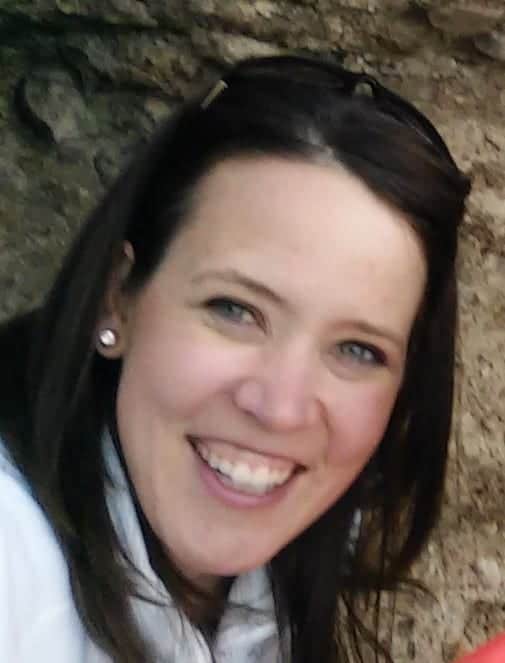 Hey there! I hold the work of early childhood educators (my title for family child care providers) in the highest regard! If you are looking for ways to better your business or to find inspiration to bring joy and meaning to your classroom, then you've come to the right place! Click here to read more!
Hey there! I hold the work of early childhood educators (my title for family child care providers) in the highest regard! If you are looking for ways to better your business or to find inspiration to bring joy and meaning to your classroom, then you've come to the right place! Click here to read more!
I’ve a daughter named Julie, she likes books but she doesn’t take care of them much. I will surely give these tips to her.. Thank you so much for sharing this 🙂